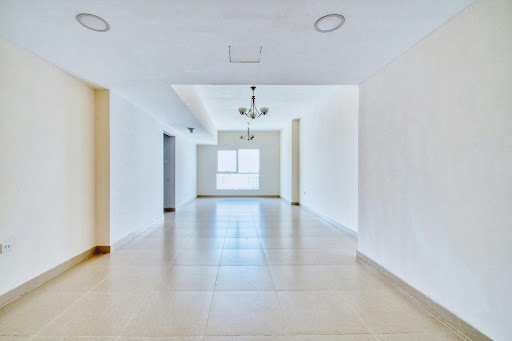
Presentation is everything. Buyers often form their first impression of a property within seconds of seeing an online listing. This is why virtual staging has become such a popular tool for real estate professionals. It allows agents and sellers to transform empty or outdated spaces into stylish, inviting homes without the cost and effort of traditional staging. While virtual staging offers undeniable benefits, it comes with pitfalls when not used correctly. Missteps in execution can damage a property’s appeal, mislead buyers, and hurt sales. To make the most of this powerful tool, it’s crucial to understand what to avoid. Below are eight common mistakes in virtual staging and how to sidestep them for a professional, trustworthy presentation.
Over-Staging or Cluttering the Space
One of the most frequent mistakes in virtual staging is adding too much furniture or décor. While the goal is to make the property look lived-in and appealing, over-staging can have the opposite effect. A room filled with oversized couches, bold artwork, and unnecessary accessories may overwhelm potential buyers. Instead of seeing the room’s dimensions and layout, they may focus solely on the furnishings. To avoid this, it’s best to keep virtual staging clean and minimal, highlighting only the important pieces that bring out the home’s functionality. Simplicity ensures that the staging enhances rather than distracts from the property itself.
Not Hiring Professionals for Virtual Staging
Trying to handle virtual staging without professional help is a common mistake that can reduce a property’s appeal. Amateur attempts often result in awkward furniture placement, mismatched styles, or unrealistic lighting that distracts buyers from the home’s true potential. When used alongside property videos, virtual staging can highlight the property’s best features and create a more immersive experience for potential buyers. Hiring experienced designers ensures every room looks cohesive, proportionate, and inviting, helping buyers visualize themselves living in the space. Professional staging elevates the presentation and builds confidence in the property’s quality.
Using Unrealistic Furniture and Decor
Another mistake is staging with items that don’t look realistic in size, scale, or style. For example, placing an enormous sectional in a modest living room can create a distorted perception of space. Futuristic or extravagant furniture styles may not resonate with most buyers, who are often seeking timeless, practical design. Virtual staging should be grounded in realism, with furnishings proportionate to the room and in line with the property’s aesthetic. By choosing realistic décor, buyers can visualize themselves living comfortably in the home, making them more likely to schedule a viewing.
Ignoring the Target Market
Virtual staging should be tailored to the type of buyers the property is meant to attract. A mistake many make is applying a generic style that doesn’t match the neighborhood, price point, or lifestyle of potential buyers. For example, a family-oriented suburban home staged with ultra-modern minimalism might feel out of place, just as a chic city loft staged with bulky traditional furniture might miss the mark. Successful virtual staging requires understanding the preferences of the target demographic and designing accordingly. When the staging speaks directly to buyers’ expectations, it creates stronger emotional connections with the property.
Over-Editing and Misleading Buyers
While virtual staging allows for creativity, crossing the line into misrepresentation can backfire. Some sellers digitally alter features like flooring, walls, or windows in a way that misleads buyers about the property’s true condition. This often leads to disappointment during in-person showings, damaging trust and credibility. Virtual staging should enhance the property. If edits are made beyond simple furniture placement, they should be disclosed in the listing. Transparency ensures buyers are not caught off guard and maintains integrity in the sales process, which is crucial for building trust and securing offers.
Staging Every Single Room
It might be tempting to stage every room in the house virtually, but doing so can be overwhelming and unnecessary. Not all rooms require staging, and in fact, leaving some spaces empty can allow buyers to imagine their uses for them. While living rooms, kitchens, and master bedrooms typically benefit from staging, smaller guest rooms or utility areas can remain untouched. Selective staging saves time and cost, and keeps the focus on the home’s most impactful areas. This balanced approach strikes the right chord between inspiration and flexibility for buyers.
Poor Quality Images
The effectiveness of virtual staging depends largely on the quality of the original photographs used as the foundation. When the base images are low-resolution, poorly lit, or taken at awkward angles, even the most carefully applied digital furniture and décor will appear unnatural and unconvincing. Grainy textures, heavy shadows, or distorted perspectives can quickly discourage buyers from engaging with a listing, since they may perceive the home as less appealing than it is. To avoid this, professional photography is critical. Bright, high-resolution, and well-composed images create a clean canvas for staging software, ensuring the results look polished, realistic, and inviting while capturing the attention of potential buyers online.
Neglecting to Show the Empty Space
Another mistake is failing to provide buyers with a view of the property’s unaltered condition. While staged images can be compelling, buyers appreciate transparency in seeing what the rooms look like without digital enhancements. Only showing staged photos can make them question what the property is hiding. A good practice is to include staged and unstaged images in the listing. This approach gives buyers a complete picture and helps them compare the potential of the space with its current state. Providing these perspectives builds trust and demonstrates honesty in the marketing process.

Virtual staging is a powerful way to showcase a property’s potential, but it must be handled with care and professionalism. Avoiding common mistakes, such as cluttering spaces, using unrealistic designs, ignoring the target market, or misrepresenting the property, can make the difference between a listing that attracts buyers and one that raises red flags. By focusing on simplicity, realism, high-quality imagery, and transparency, sellers and agents can use virtual staging as a tool to inspire and connect with buyers. When done right, virtual staging paves the way for faster sales and stronger offers.
Raghav is a talented content writer with a passion for creating informative and interesting articles. With a degree in English Literature, Raghav possesses an inquisitive mind and a thirst for learning. Raghav is a fact enthusiast who loves to unearth fascinating facts from a wide range of subjects. He firmly believes that learning is a lifelong journey and he is constantly seeking opportunities to increase his knowledge and discover new facts. So make sure to check out Raghav’s work for a wonderful reading.





